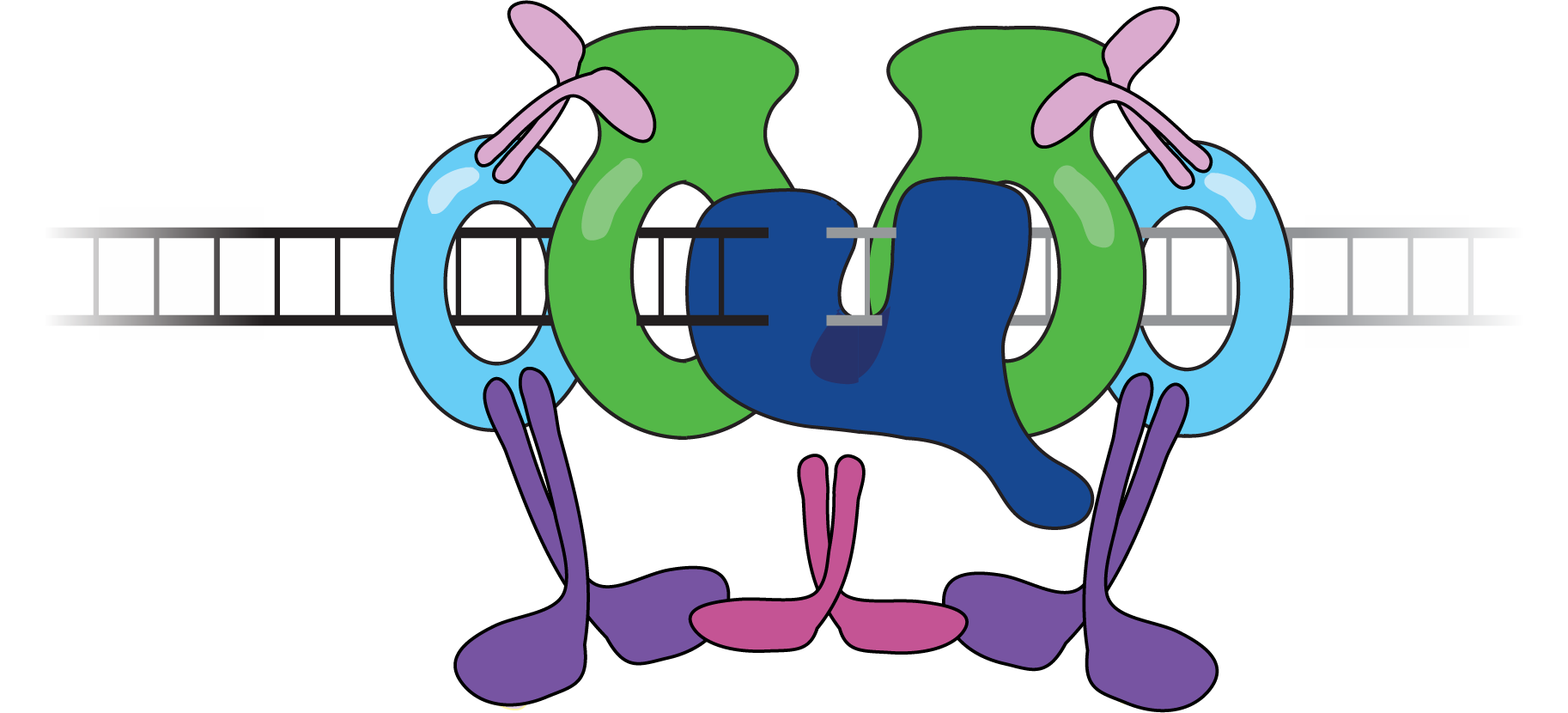Repair of double-strand DNA breaks by non-homologous end joining
DNA double strand breaks (DSBs) are extremely toxic lesions that can arise spontaneously or can be induced by agents such as ionizing radiation or endonucleases involved in programmed genome rearrangements. For the majority of the cell cycle DSBs are repaired by NHEJ, a process that robustly ligates even damaged or incompatible DNA ends, albeit in a way that can generate insertion or deletion mutations. We are using single-molecule FRET approaches to directly visualize the repair of DSBs in reconstituted systems and in vertebrate cell free extracts. We have demonstrated that end synapsis passes through at least two structurally distinct states and have identified the core NHEJ factors required to form these states. We are currently working to further describe how the assembly of the NHEJ machinery is controlled, how DNA ends are held together by this machinery, and how mutations are minimized during repair.

